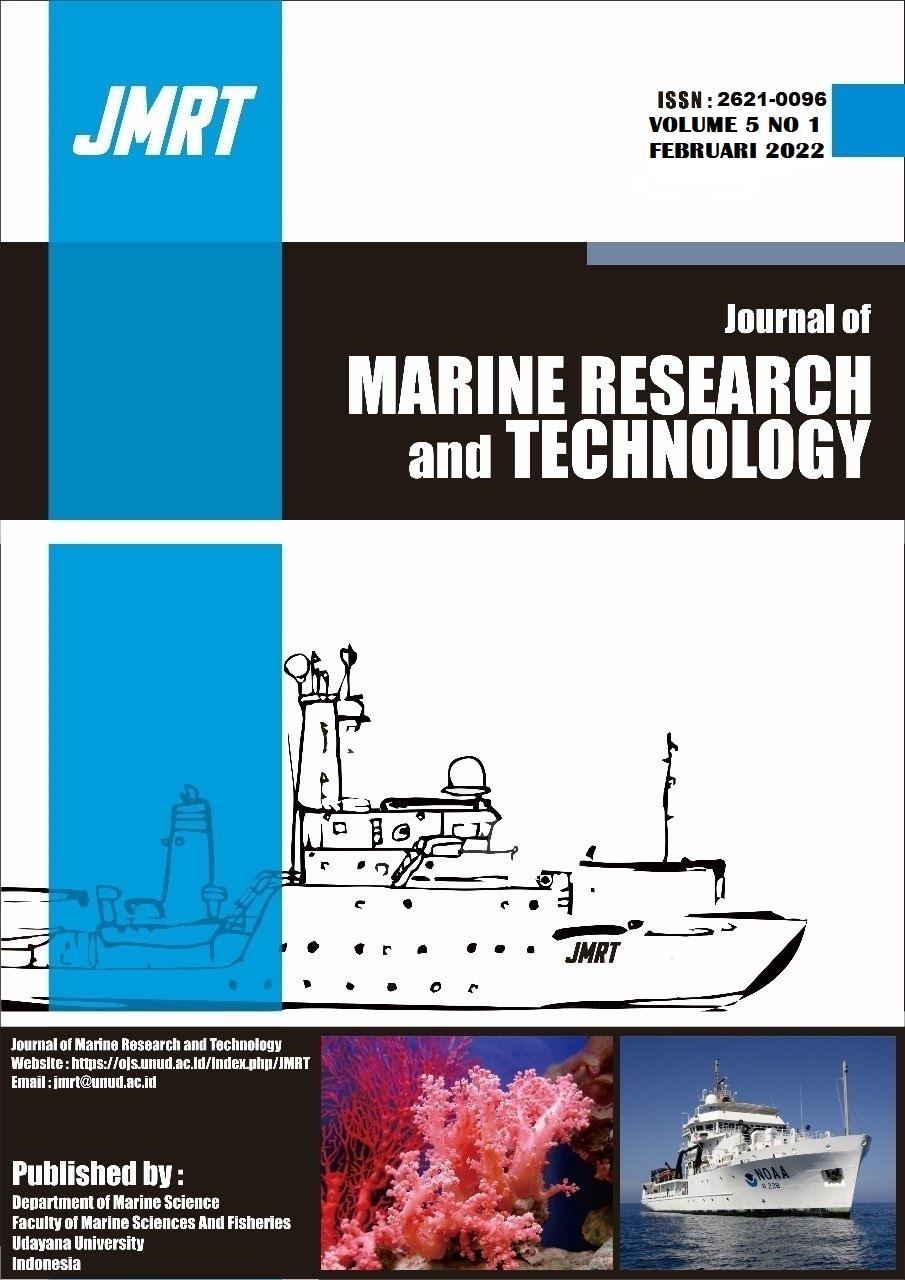Pemetaan Habitat Bentik Menggunakan Citra Sentinel-2A dan Unmanned Aerial Vehicle (UAV) di Perairan Pemuteran, Bali
Benthic Habitat; Sentinel-2A Imagery; Unmanned Aerial Vehicle (UAV); Pemuteran, Bali
Abstrak
The benthic habitat has a huge ecological and economic role in the sustainability of the coastal environment and is vulnerable to change. The importance of the existence of the benthic habitat requires identification and monitoring of the habitat's existence and status. One of the technologies that can be utilized is remote sensing technology, which is able to provide solutions to the limitations of conventional methods, such as time that is relatively long, costly, and difficult to reach remote and risky areas. Selection of sensing vehicles takes into consideration the needs and desired qualities because the sensors brought in to detect habitats have different abilities. Sentinel-2A imagery is an open-source satellite with a 10 m spatial resolution capability, while the image from Unmanned Aerial Vehicle (UAV) has a high spatial resolution of up to 1 cm per pixsel depending on flight level. The purpose of this study is to identify the degree of accuracy and the scattered conditions of the benthic habitat by the sentinel-2A imagery and the UAV imagery in mapping the benthic habitat in the shallow waters of Pemuteran. The two images for classification use classification based objects and accuracy tests using the confusion matrix method. Based on field observations, five kinds of habitat composition with vast dead corals, dead coral, rubble, biorock, sand, and stone sand are 13.63 ha, 1.45 ha, 0.87 ha, 6.05 ha, and 1.67 ha on the sentinel-2A imagery and 12.86 ha, 1.54 ha, 0.18 ha, 7.32 ha, and 1.76 ha on the UAV imagery. The Sentinel-2a's imagery capability in mapping the benthic habitat is adopted by 73.95%, whereas the UAV imagery is 81.51%. The value of accuracy obtained in the study shows the use of remote sensing data using both imagery can be used for the mapping of habitat benthic.
##plugins.generic.usageStats.downloads##
Copyright Notice
The copyright to this article is transferred to Journal of Marine Research and Technology (JMRT). The copyright transfer covers the exclusive right and license to reproduce, publish, distribute and archive the article in all forms and media of expression now known or developed in the future, including reprints, translations, photographic reproductions, microform, electronic form (offline, online) or any other reproductions of similar nature.



